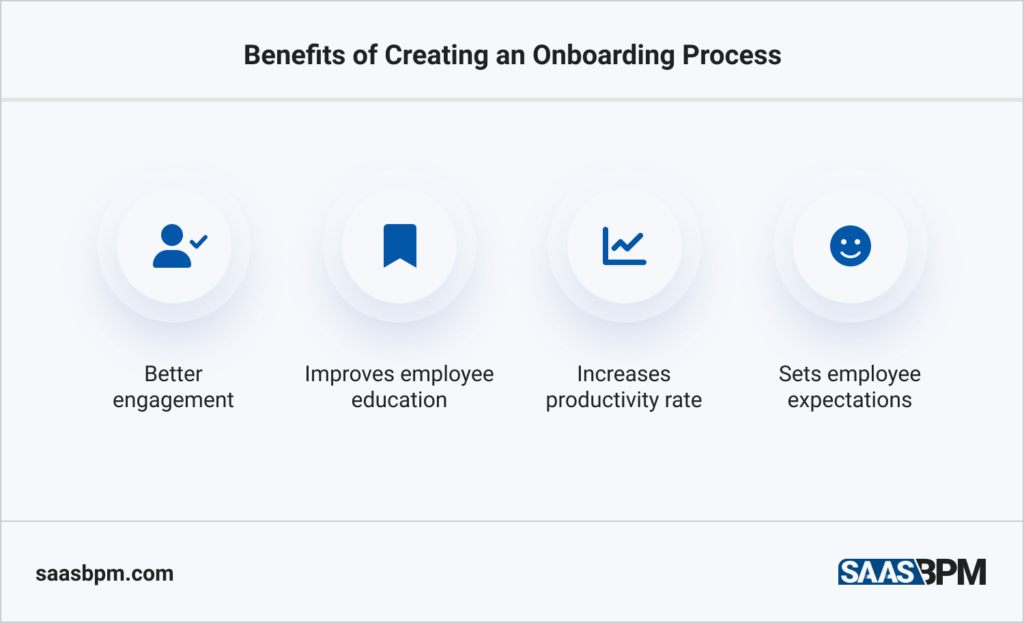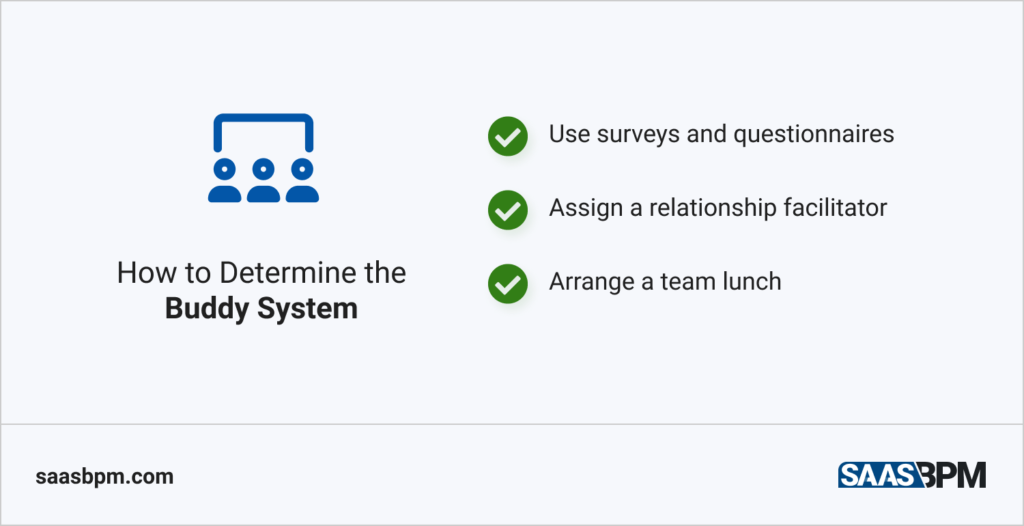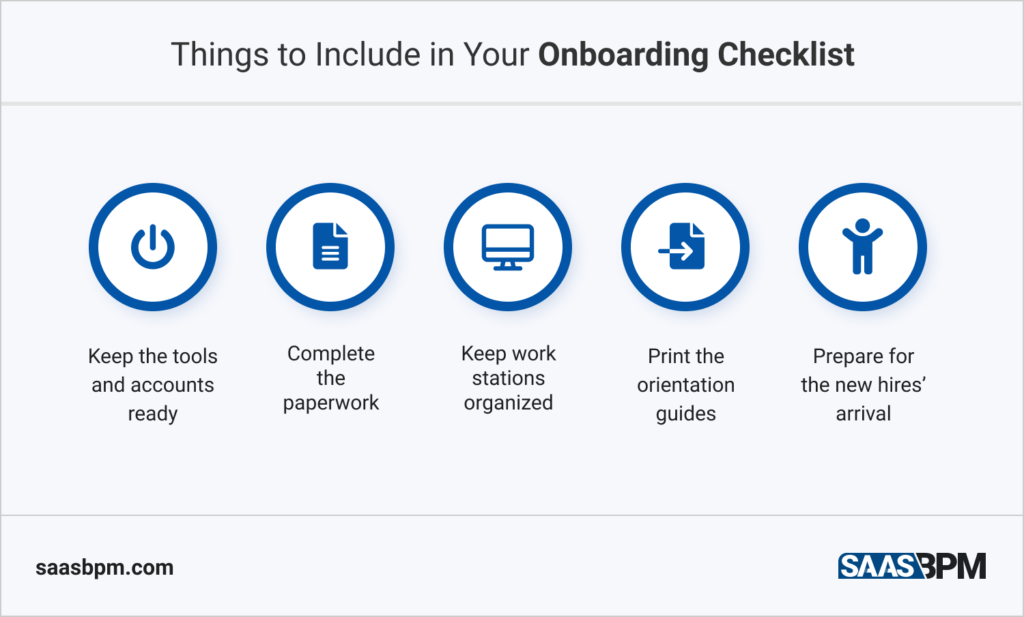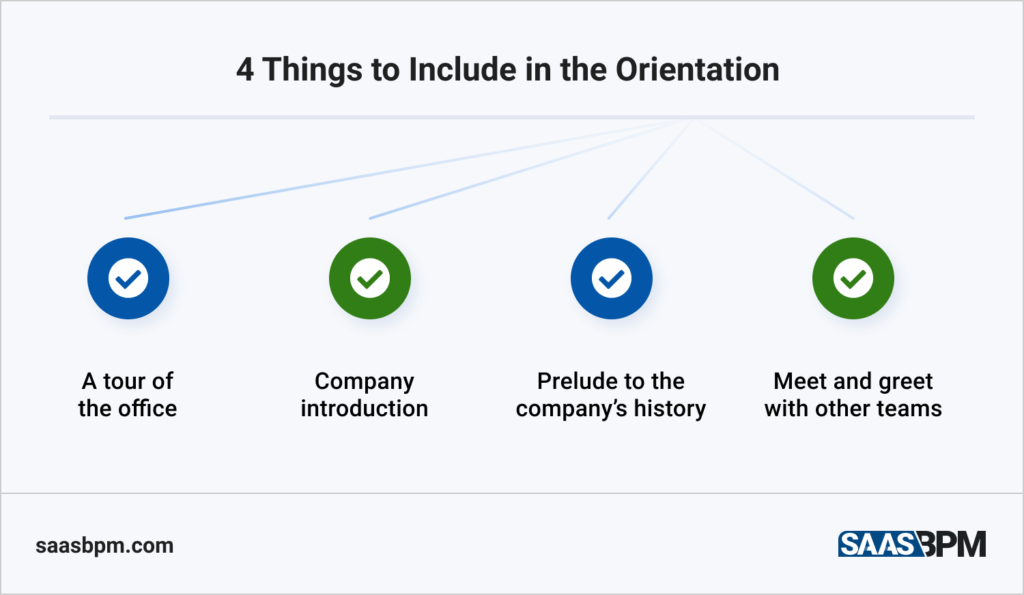Growing businesses are always looking for new candidates to help them take their companies to the next level. With the right people on board, business procedures become more manageable, smoother, and efficient. However, managers must design a detailed and practical onboarding process checklist to make sure their employees are on the same page.
Trends and technology change so rapidly, and the onboarding process for new team members must be revised and improved from time to time. Creating an onboarding process checklist prepares the new hires for what’s to come regarding their stay with the company. Doing this helps reduce errors in workflow and high turnover rates.
There are a couple of reasons why companies should create their onboarding process for new hires:
- Better engagement of the new employees.
- Keeping the new hires well-informed of the company’s processes and culture, which increases retention.
- Getting the members ready and acquainted with their tasks.
- Increasing the level of productivity.
- Letting the staff know what to expect while they are with the company.
With this said, let’s start discussing the onboarding process best practices that firms must do to help improve business results.

Implement Shadowing
Shadowing is the process of assigning a seasoned employee to train a new hire. The shadower is in charge of introducing the latest recruit to the team, getting them acquainted with the tasks, and keeping them familiar with its culture. This procedure allows the new team member to ease into the projects better. Moreover, having someone to reach out to will make the new employee more comfortable at work.
Companies must see to that they assign someone to the new hires during the onboarding process. It would be great if they can do this for each person for the team. If this is not possible, then consider assigning one person to a group of about three to five new members.
Here are a few ways to determine the buddy system for the onboarding process:
- Use interest and personality surveys so you’d know who to partner with who.
- Assign a relationship facilitator.
- Organize a team lunch during orientation day. Doing such will make introductions easier.
The more comfortable the new individual is, the better they will be able to perform at work.

Begin the Onboarding Process Even Before the First Day
Plan your onboarding process checklist, so you don’t have to do too much during the first day itself. Consider sending documents that the new employee can review over email. Doing this will lessen the time they would have to spend reading and researching at the office to begin their tasks immediately.
Additionally, you can also send them essential details such as the company rules, what to wear at the office, their work schedule, and what to expect during their first few weeks. This process will not only help the staff member prepare for their role better, but it will also aid businesses with making the most out of their employees’ time at the office.
Have a Solid Plan
A lack of planning will make both managers and new hires anxious about the onboarding process. To make things easier for everyone involved, create a structured plan that everybody can follow. The onboarding process checklist should include the following:
- Keep the new hires’ tools and accounts ready. Install the applications on their designated computers and create the accounts before the new teams arrive at the office for their orientation.
- All of the essential documents must be submitted. The employees’ paperwork must all be completed before their first day to prevent the HR department from going back and forth.
- All workstations must be cleaned and organized beforehand. The computers, tables, and chairs must be put in place in advance.
- Orientation guides must be printed or sent to the newbies right away.
- Have the designated teams ready for the new hires’ arrival.
Again, time is essential so the company wouldn’t have to risk losing money during the onboarding process.

Implement Onboarding Templates
Dealing with paperwork is a time-consuming task, and having templates ready will make the onboarding process easier and faster. Documents such as NDAs, compliance forms, and other essential papers must be prepared ahead of time to avoid time wastage. Onboarding process checklists should also be made in advance, so the human resources department and managers do not have to go to-and-fro.
Applications such as Smartsheet and Kissflow offer checklists and employee onboarding templates that marketers can use for the program.
Plan the Orientation Accordingly
A lot of marketers confuse orientation with the onboarding process for new hires. However, these are two completely different programs. Orientation is usually a one to a two-day event held to welcome the new employees, while the onboarding procedure aims to help the individuals succeed with their day-to-day tasks.
The orientation is part of the onboarding process, which should include the following:
- An intensive tour of the office.
- An introduction to the company, including its mission and vision, rules, goals, and more.
- A prelude to the business’ history and the executives responsible for the brand’s inception.
- Meet and greet with the teams and other departments.
Having a proper orientation plan will help the new hires get comfortable and up to date with business goals, which will benefit the new employee and the company itself.

Place Feedback Sessions In Place
Just as we mentioned, the onboarding process for new hires takes months to accomplish. It is vital to check in with your new staff members at least once a week to ensure that everything goes smoothly. Schedule one-on-one meetings with them where you can talk about their accomplishments, hurdles, and suggestions that they might have.
Getting feedback from your team members will help strengthen the employee-employer relationship. Additionally, you can also track your staff’s growth and evaluate whether they need additional guidance or not. This process also lets the employee know that they are valued and that the company is concerned about their goals and accomplishments.
Conclusion
It’s time to update your outdated onboarding process checklist and create a new one. Make it your goal to provide a personalized experience to your new hires, as this will benefit not only the employee but the business itself. The business results might not be noticeable at first, but once you apply everything listed in this article, you will see the improvement in time. Let us know which one of these tips worked for you. We would love to know!

